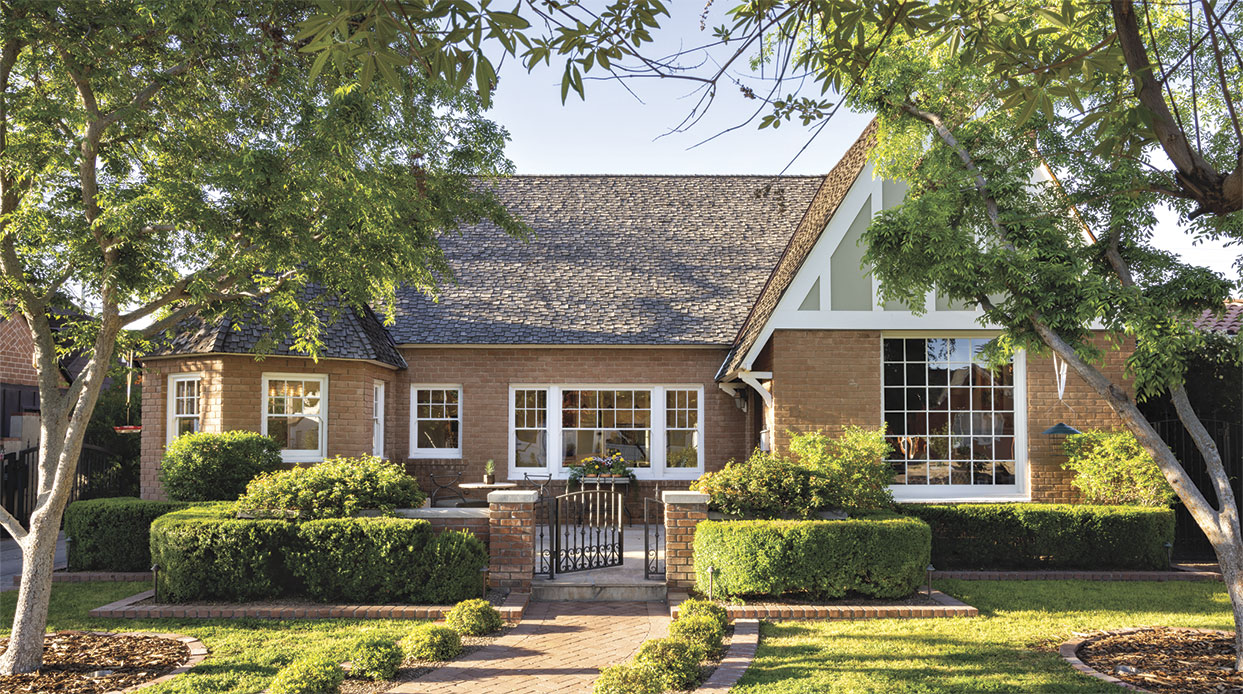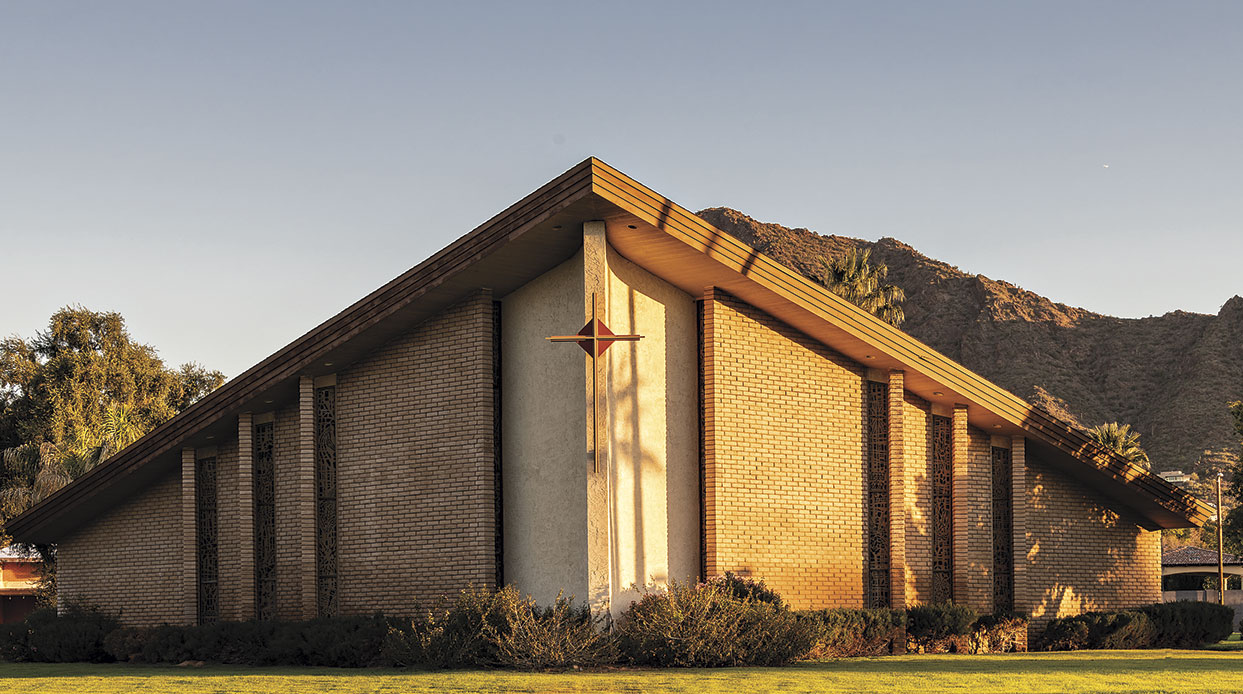History: Al Beadle’s Executive Towers is a Much-Loved Landmark on the Phoenix Skyline
Once Phoenix’s tallest apartment building, Executive Towers embodied luxury high-rise living.


By John Roark | Photography by Scott Sandler
Although it has been dwarfed by taller buildings in the decades since it was built, architect Alfred Newman Beadle’s Executive Towers remains a much-loved landmark on the Phoenix skyline. Completed in 1963, the 22-story, 160-unit apartment house (which converted to condominiums in 1971) was the high-end residence for the affluent smart set who worked downtown. Original marketing materials for the property, showing tuxedoed men and women in sleek cocktail dresses, describe it as, “your luxury home in the sky,” and “the prestige address of Phoenix.”
Located just west of Central and Clarendon avenues in what is now midtown Phoenix, the building was a springboard for where Phoenicians were heading. “Executive Towers was important because it took residential architecture farther north of downtown Phoenix than it had ever been,” says architectural historian Roger Brevoort. “In order to accomplish that, they had to amend the zoning ordinance to create a high-rise residential category.”
The rectangular structure—Beadle’s interpretation of the Miesian aesthetic—was completed when the architect was only 33 years old. “He was so young when this happened,” observes Modern Phoenix founder Alison King. “Executive Towers is one of Beadle’s masterworks; it was an opportunity for him to make a statement and to show his vision of how he thought people should live.”
Reed Kroloff, Rowe chair and dean of the College of Architecture at Illinois Institute of Technology and former editor-in-chief of Architecture magazine, praises the Towers’ timeless beauty. “It’s very sophisticated,” he says. “Considering Beadle never went to architecture school, it’s surprising how good he was. When you put his work up against other work in the city that came after him, it’s kind of startling to see that people haven’t learned from him more effectively.”
The Towers is a prime example of Beadle’s innate gift for designing buildings to their location. “Al’s domain was Phoenix,” Kroloff says. “This building is narrow from east to west because it’s hot on those sides. He knew the coolest exposures in Arizona are north and south. He was very much aware of the environmental conditions, doing the most that he could at that moment in time when no one else was paying attention to such things.”
While the structure is modernist in style, its creator softened sharp angles with rounded corners and integrated artwork and whimsical touches. “Many remember Beadle for the severity of his minimalism,” King says. “He used Executive Towers as a palette to really be playful and to expand his artistic voice.”
The Towers is striking in ways that may not be immediately apparent to the casual observer. “It’s compositionally beautiful and proportionally very elegant,” Kroloff raves. “It’s taller than it is wide; the higher it goes, the more elegant and streamlined it looks. Beadle understood that the eye responds well to something that’s slender.”
Added to the National Register of Historic Places in 2017, Executive Towers’ legacy is intact and resonates with proud Phoenicians and beyond. “This property was quite successful in the beginning, followed by a period when it went down. Then it came back strong in the early part of the 21st century,” Kroloff says. “I love the fact that after six decades, it’s still the best tall building in Phoenix.”
Brevoort agrees. “The fact that it is still sought after says a lot about the quality of the architecture—and about the interest and appreciation Phoenicians have for design. This continues to be a frontline address 60 years later.”












